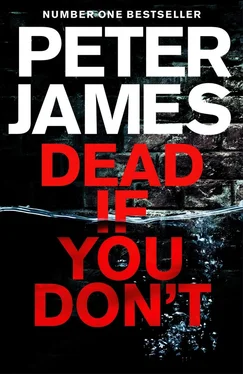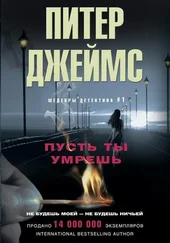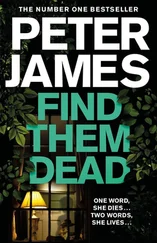HTCU —High Tech Crime Unit. Now renamed Digital Forensics. The body which examines and investigates computers and other digital advisors. Part of SCC.
IFA —Independent Financial Advisor.
IMEI code —A fifteen-digit number is used by a mobile networks to identify valid devices and therefore can be used for stopping a stolen phone from accessing that network or to trace phones used with any SIM card
LST— Local Support Team. The standing unit of officers who provide public order, search and low-level surveillance tactics on a division.
Match Commander —The senior officer at the football stadium who has operational command of the police working within and in the vicinity of the stadium.
MO— Modus Operandi (method of operation). The manner by which the offender has committed the offence. Often this can reveal unique features which allow crimes to be linked or suspects to be identified.
NaCTSO— National Counter Terrorism Security Office. A national police unit that leads on the fight against terrorism.
NASA— National Aeronautics and Space Administration. The US Space Agency.
NPAS 15— The call sign for the helicopter that provides air support to Sussex Police.
NPT —Neighbourhood Policing Team. A team of officers and Police Community Support Officers (PCSOs) who are dedicated to a particular geographical area, primarily to reduce crime and improve people’s feelings of safety.
OSCAR1— The call sign of the Force Control Duty Inspector, who has oversight and command of all critical incidents in the initial stages.
PM— Postmortem.
QR Code— A form of barcode which, when scanned, diverts the reading device being used to a website.
RPU— Roads Policing Unit. The name for the Traffic Division.
RTC— Road Traffic Collision (commonly known as an ‘accident’ by the public, but this term is not used as it implies no one is at fault when usually someone is).
RV Point— Rendezvous Point. The designated location where emergency services meet prior to deploying to the scene of a crime or major incident. Used when it would be too dangerous or unwieldy for everyone to arrive at the scene at the same time in an uncoordinated way.
SECAMB— South East Coast Ambulance Service.
Section 17 PACE Powers— A power of entry under the Police and Criminal Evidence Act 1984 which allows officers to enter premises without a warrant to make an arrest, to save life or limb, or to prevent serious damage to property.
SIO— Senior Investigating Officer. Usually a Detective Chief Inspector who is in overall charge of the investigation of a major crime such as murder, kidnap or rape.
All-ports alert— A nationwide alert for all air and seaports to be on the lookout for a particular person, vehicle etc.
Bosher— The heavy metal handheld ram used to force open doors and allow officers to enter a locked premises or room swiftly and with the advantage of surprise.
Burner phone— Slang for a pay-as-you-go mobile phone, which is used once then disposed of to avoid the user being traced.
Golden hour— The first hour after a crime has been committed or reported, when the best chances of seizing evidence and/or identifying witnesses exist.
HOT Principle— An acronym to assist in assessing whether a suspect package is likely to be an explosive device:
Hidden: Is it obviously hidden? Has someone deliberately tried to conceal it?
Obvious: Is it obviously out of place and out of context for its environment? Are there any wires, switches, batteries or components visible?
Typical: Is it typical of an item usually seen in the environment?
Q word/Q day —Short for ‘quiet’. Emergency services personnel never say the word ‘quiet’, as it invariably is a bad omen, causing chaos to reign!
Police ranks are consistent across all disciplines and the addition of prefixes such as ‘detective’ (e.g. detective constable) does not affect seniority relative to others of the same rank (e.g. police constable).

Police Constable

Police Sergeant

Inspector

Chief Inspector

Superintendent

Chief Superintendent

Assistant Chief Constable

Deputy Chief Constable

Chief Constable
As ever I owe an enormous debt to so many people who have generously helped me with the authenticity of what I have written, by checking facts and often making brilliant suggestions which have enhanced this story in so many ways.
My first thanks are to many officers and support staff of Surrey and Sussex Police, the Metropolitan Police and the City of London Police: Sussex Police and Crime Commissioner Katy Bourne; Chief Constable Giles York QPM; Assistant Chief Constable, BTP, Robin Smith; Detective Chief Superintendent Nick Sloan; Detective Chief Superintendent Jason Tingley; Chief Superintendent Lisa Bell; Detective Superintendent Jason Taylor; Detective Chief Inspector Mike Ashcroft; Chief Inspector Steve Boniface; DCI Stuart Hale; DI Richard Haycock; DI Bill Warner; Inspector James Biggs; Inspector Jason Cummings; Inspector Chris Smith; DS Phil Taylor; DS Grant Webberley; PC Jon Bennion-Jones; PC Darren Balkham; PC Pip Edwards; PC Jonathan Jackson; PC Richard Trundle; Dog Handler PC Sian Weston-Smith.
One police officer I need to single out for the introductions she made and the help she gave me in understanding the world of the Albanian communities in the UK, is PC Nikki Denero.
Maria O’Brien, James Stather, Chris Gee, James Gartrell from Forensic Services. Annabel Galsworthy, Comms. Aiden Gilbert, Joseph Langford, Graham Lewendon, Shaun Robbins and Daniel Salter from the Digital Forensics Unit.
Also to the following retired officers: Chief Superintendent Graham Bartlett, Detective Chief Inspector Trevor Bowles, Inspector Keith Ellis, Inspector Andy Kille, PC David Rowlands.
Читать дальше




















![Питер Джеймс - Wish You Were Dead [story]](/books/430350/piter-dzhejms-wish-you-were-dead-story-thumb.webp)
